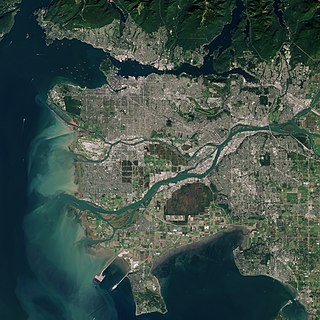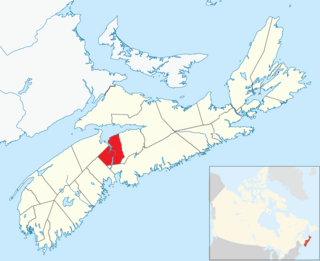Related Research Articles

Northern Canada, colloquially the North or the Territories, is the vast northernmost region of Canada variously defined by geography and politics. Politically, the term refers to the three territories of Canada: Yukon, Northwest Territories and Nunavut. This area covers about 48 per cent of Canada's total land area, but has less than 1 per cent of Canada's population.

Inuvik is a town in the Northwest Territories of Canada, and hosts the regional office of the Inuvik Region. Inuvik is both a Gwich'in and an Inuvialuit community. The community, like Aklavik, is located in both the Gwich'in Settlement Area and the Inuvialuit Settlement Region.

The Metro Vancouver Regional District (MVRD), or simply Metro Vancouver, is a Canadian political subdivision and corporate entity representing the metropolitan area of Greater Vancouver, designated by provincial legislation as one of the 28 regional districts in British Columbia. The organization was known as the Regional District of Fraser–Burrard for nearly one year upon incorporating in 1967, and as the Greater Vancouver Regional District (GVRD) from 1968 to 2017.

The census geographic units of Canada are the census subdivisions defined and used by Canada's federal government statistics bureau Statistics Canada to conduct the country's quinquennial census. These areas exist solely for the purposes of statistical analysis and presentation; they have no government of their own. They exist on four levels: the top-level (first-level) divisions are Canada's provinces and territories; these are divided into second-level census divisions, which in turn are divided into third-level census subdivisions and fourth-level dissemination areas.

Nunavut is a federal electoral district in Nunavut, Canada, that has been represented in the House of Commons of Canada since 1979. Before 1997, it was known as Nunatsiaq, and was one of two electoral districts in Northwest Territories.

West Hants, officially named the West Hants Regional Municipality, is a regional municipality in Hants County, Nova Scotia, Canada.

Rock Harbour is a local service district and designated place in the Canadian province of Newfoundland and Labrador. It is east of Marystown on Placentia Bay.

Cardston County is a municipal district in southern Alberta, Canada. It is located in Census Division 3 around the Town of Cardston.

Ontario, one of the 13 provinces and territories of Canada, is located in east-central Canada. It is Canada's most populous province by a large margin, accounting for nearly 40 per cent of all Canadians, and is the second-largest province in total area. Ontario is fourth-largest in total area when the territories of the Northwest Territories and Nunavut are included. It is home to the nation's capital city, Ottawa, and the nation's most populous city, Toronto.
The United States Census Bureau defines a place as a concentration of population which has a name, is locally recognized, and is not part of any other place. A place typically has a residential nucleus and a closely spaced street pattern, and it frequently includes commercial property and other urban land uses. A place may be an incorporated place or it may be a census-designated place (CDP). Incorporated places are defined by the laws of the states in which they are contained. The Census Bureau delineates CDPs. A small settlement in the open countryside or the densely settled fringe of a large city may not be a place as defined by the Census Bureau. As of the 1990 Census, 26% of the people in the United States lived outside of places.

Petite Forte is a local service district and designated place in the Canadian province of Newfoundland and Labrador. It is on Placentia Bay and is connected by road via Route 215. Petite Forte is located on the Burin Peninsula which is on the southeast coast of the island of Newfoundland in the province of Newfoundland and Labrador. It fought attempts by the government in the 1960s to resettle. Petite Forte has a population of 26 according to the 2021 census.

Great Codroy is a local service district and designated place in the Canadian province of Newfoundland and Labrador. In 2016, it had a population of 69.
References
- 1 2 3 4 5 6 7 Government of Canada, Statistics Canada (2016-11-16). "2016 Census Program". www12.statcan.gc.ca. Retrieved 2021-08-13.
- ↑ "Designated place | 2011 Census". www150.statcan.gc.ca. Retrieved 2021-08-13.
{{cite web}}: CS1 maint: url-status (link) - 1 2 3 "More information on Designated place (DPL)", Statistics Canada.
- 1 2 3 4 5 "Dictionary, Census of Population, 2016 Table 1.1 Geographic areas by province and territory, 2016 Census". www12.statcan.gc.ca. Statistics Canada. November 16, 2016. Archived from the original on January 11, 2020. Retrieved January 11, 2020.
- ↑ "Census Dictionary: Table 1 – Geographic units by province and territory, 2011 Census". Statistics Canada. 2012-01-30. Retrieved 2012-05-05.
- 1 2 3 4 5 6 "Population and dwelling counts, for Canada, provinces and territories, and designated places, 2011 and 2006 censuses (Saskatchewan)". Statistics Canada. 2012-02-08. Retrieved 2012-02-19.